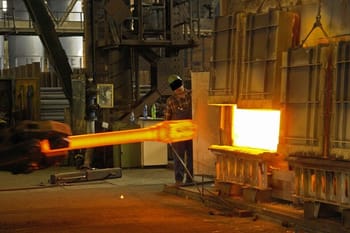Difficult Things About Hot Die Forging.
A good ductility and strength in all directions at both elevated as well as reduced temperatures. Improved degrees of both hot hardness and hot tensile stamina. The Advantages of Hot Forging Typically made use of for the type of components that have an impact in technological applications, warm creating is likewise an advised process for contortion of steels that feature high formability proportions.

Due to the decrease in yield strength, it takes less energy (or pressure) to deal with the material. Throughout hot creating and also succeeding deformation, pores can minimize (in size) or close completely. Due to the fact that the raised temperature levels enhance diffusion it is possible, in turn, to decrease or get rid of chemical inhomogeneity. In warm forging steel, the weak and pliable FCC (face-centered cubic) austenite is deformed rather than the solid BCC (body-centered cubic) ferrite which would warp at reduced building temperature levels. Hot Die Forging.
These drawbacks include: The result of a much less exact resistance triggered by warping and also thermal tightening. This is created in instances where uneven cooling exists. There is the possibility that the grain structure may differ throughout the metal. With hot working, there is also the possibility of an unfavorable response between the metal being built and the surrounding ambience.

5. 17.5 Tooling Construction, In hot stamping, blanks are warm formed and also press solidified in a water-cooled device to accomplish high stamina. The tool is used not just to form parts however also to satiate components (Hot Die Forging). Style and also manufacturing of the device dramatically influences the last homes of the blank as well as the procedure time.
Compared to a hot creating die, a warm stamping die has similar characteristics in tooling products, machining, as well as heat therapy. Cold work pass away products such as D2, M2, or SKD11 are not suitable, whereas warm work pass away products such as H13/1. 2344, H11/1. 2343, 1. 2714, and 1. 2767 are typically utilized for the die parts, punch, and also empty holder.
The marking device must give adequate structure rigidity, good surface area hardness, and also sufficient fatigue life. Second, it has actually been well approved that the air conditioning rate impacts the final top quality of the hot marking product, so the tooling material ought to have good thermal conductivity to guarantee fast warmth transfer between the tooling and also the parts.
The hot marking tool experiences alternate warm as well as cool working conditions, so the tooling material need to be chosen to resist thermal rubbing as well as high possible disintegration caused by the falling oxide. Compared to created parts, hot marking parts do not have machining allowance; as a result, to enhance the forming dimension accuracy, the thermal expansion distinction between the tooling and also the sheet metal ought to be family member small.
Annealing (32) is a process that creates conditions by heating to greater than Ac3 (at which the ferrite changes to austenite) + 3050 C or Ac1 (at which pearlite transforms to austenite) + 3050 C or under Ac1, keeping at ideal temperature level, and also after that cooling slowly in the heater. This is made use of to boost ductility, soften material, and relieve inner stress and anxiety for raw machining.
5-dimensional or three-dimensional cutting modern technologies, can be used to make harsh machining of die parts, as received Number 10 for die surface area milling (33 ). High-speed cord electrical discharge machining is also being used for rough machining since it has the advantage of minimized reducing time. Number 10. NC milling of the die surface.

评论
发表评论